Unraveling the Mystery of the Headless Viking Skeletons Discovered in Dorset
The archaeological community is currently in astonishment at the discovery of a mass shallow grave in the beautiful countryside of Dorset, England. The grave is stuffed to the brim with what they believe to be Vikings who were executed during the Middle Ages.
The real intrigue comes from the end of a 15-year-long period of study in which archaeologists have been analyzing the 54 dismembered skeletons from Dorset. The conclusion that these were executed Vikings has given closure to an extensive and prolonged study of the conspicuous burial spot.
Finding a Mass Grave in Weymouth
The initial discovery of the mass grave happened in an unusual and unexpected location. In 2009, the town of Weymouth in Dorset contacted archaeologists and asked them to investigate a strange finding.
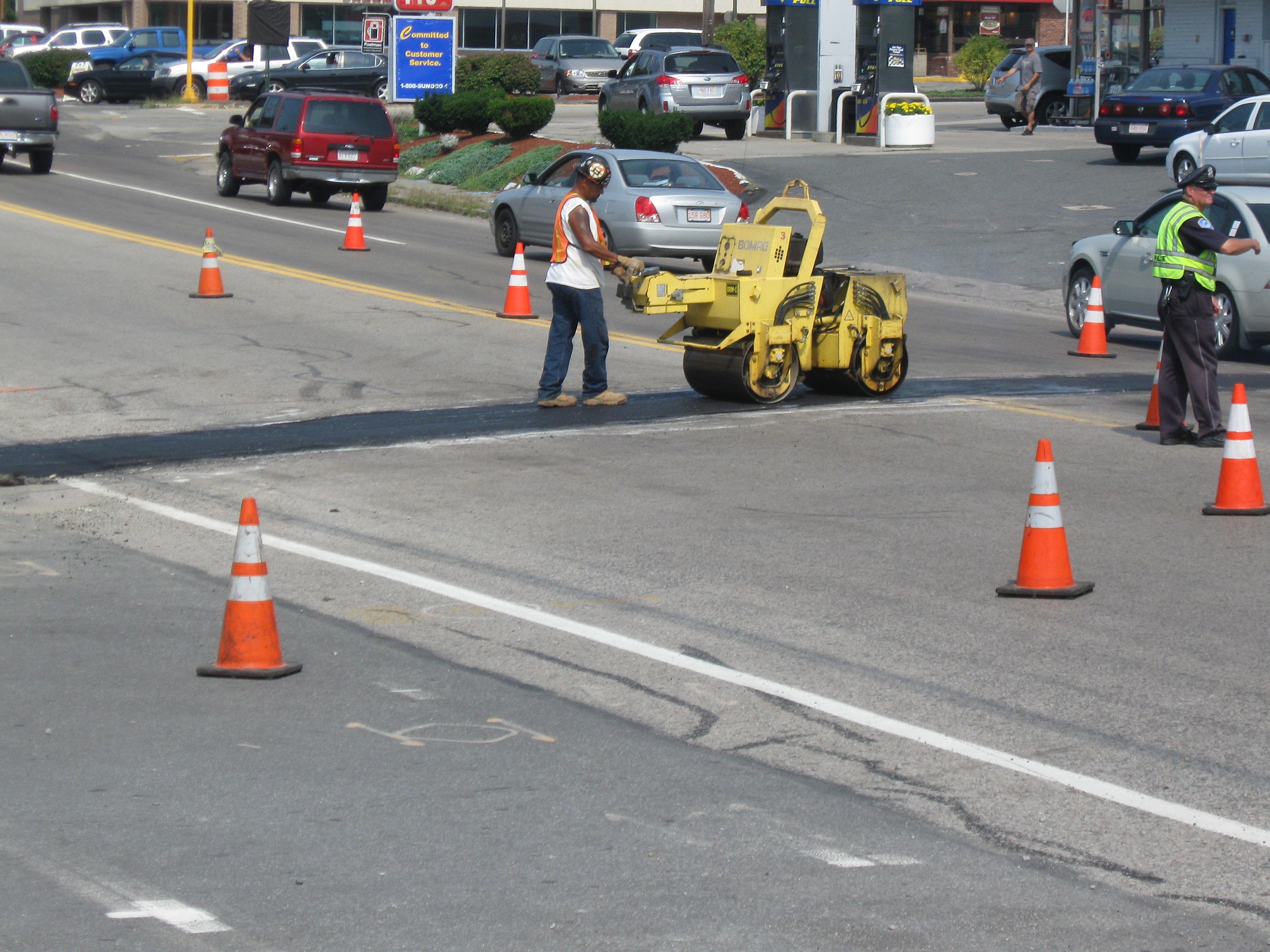
MassDOT/Wikimedia Commons
Weymouth authorities were planning to begin construction on a road but were forced to immediately stop when several skeletons appeared only a few feet below the surface of the dig.
A Diligent Excavation Ensued
The archaeologists the city called in were from Oxford Archaeology. They were able to safely and quickly begin work on the excavation. It didn’t take long before they realized they were dealing with dozens of skeletons—this was a mass grave.
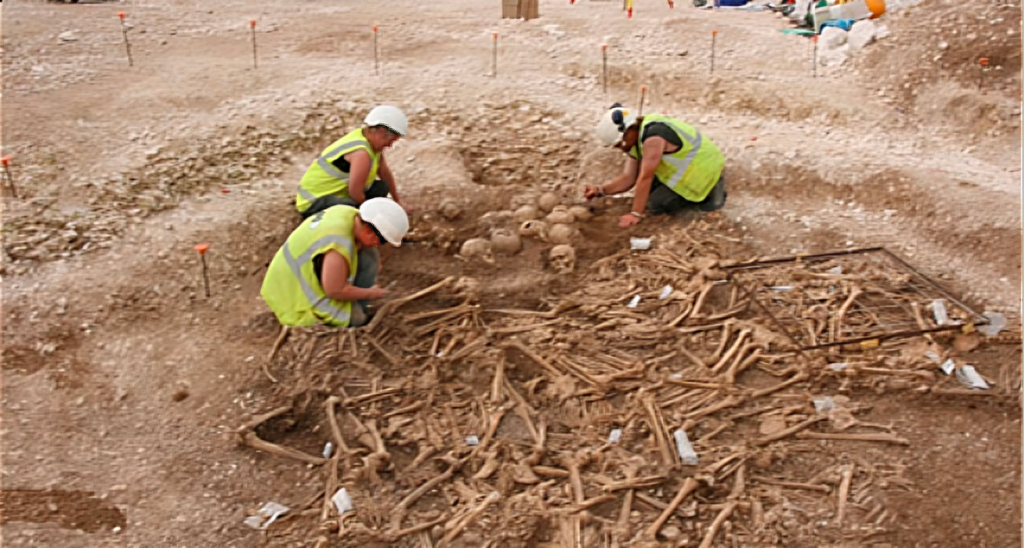
oxfordarch/X
It took a lot of careful, exacting digging and work, but the archaeological team was able to eventually recover 54 decapitated skeletons and 51 of their attendant skulls.
Further Study Told Experts More about the Ancient Skeletons
The experts studying these skeletons have not yet confirmed exactly how old the skeletons are, though they are sure they were killed sometime between the 5th and 10th century, during the early Middle Ages.

Source: @DidYouKnow/YouTube
They also know through detailed examinations that all 54 skeletons were once males, most of whom were less than 25 years old. And because there were no remnants of clothing or weapons in the grave, it’s widely believed they were buried naked.
How Did They Die?
A shallow mass grave of more than 50 headless male skeletons almost certainly implies that these men were killed in some way. Though, it was the expert archaeologists’ job to find out exactly how they were killed.
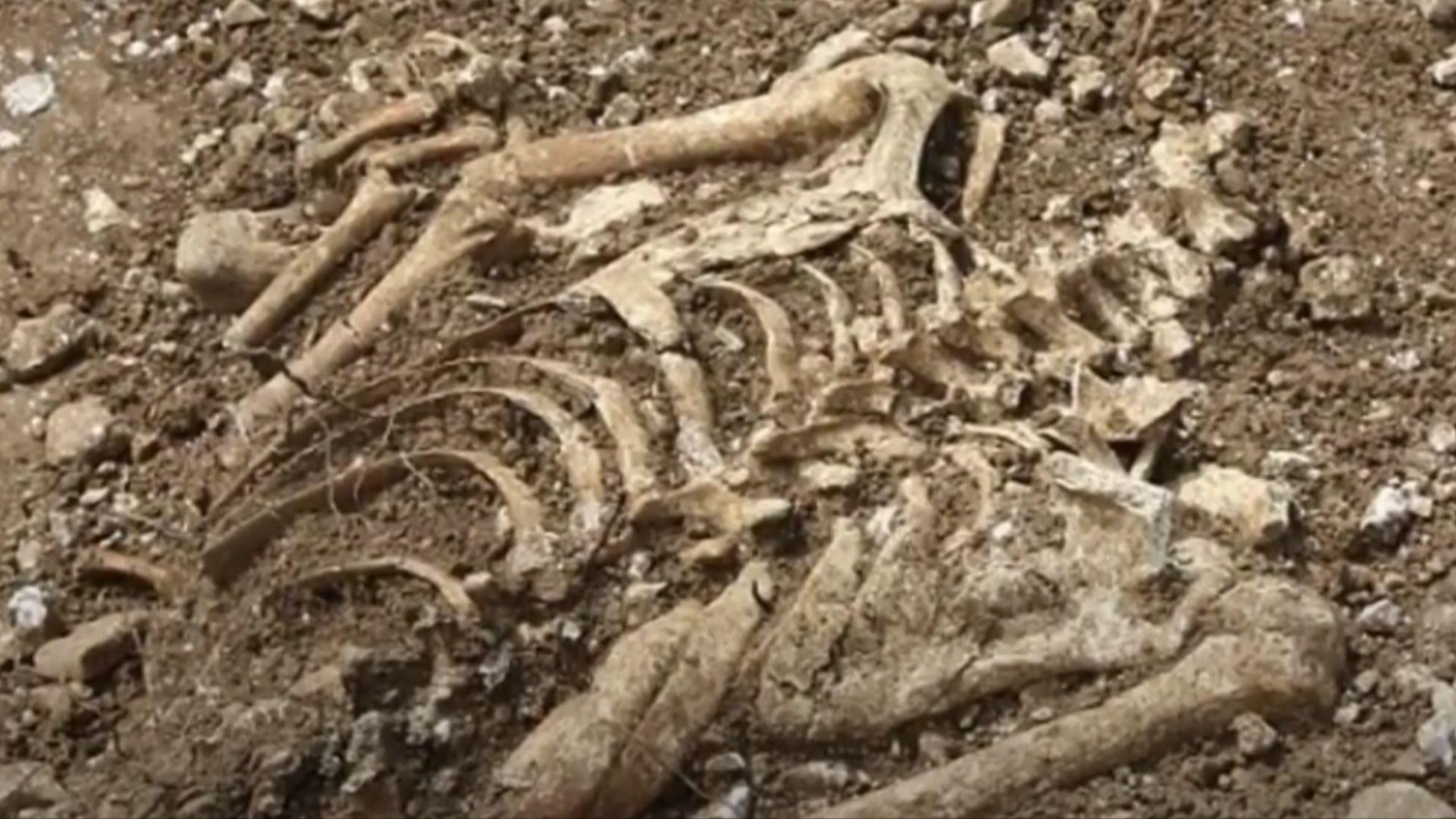
Source: @DidYouKnow/YouTube
The first interesting aspect of these skeletal remains is that none of them showed battle wounds, which led researchers to believe they didn’t die fighting.
A Mass Execution
Instead, they noted that each skeleton showed signs of execution via blows or deep cuts to the skull, jawbone, or spine.
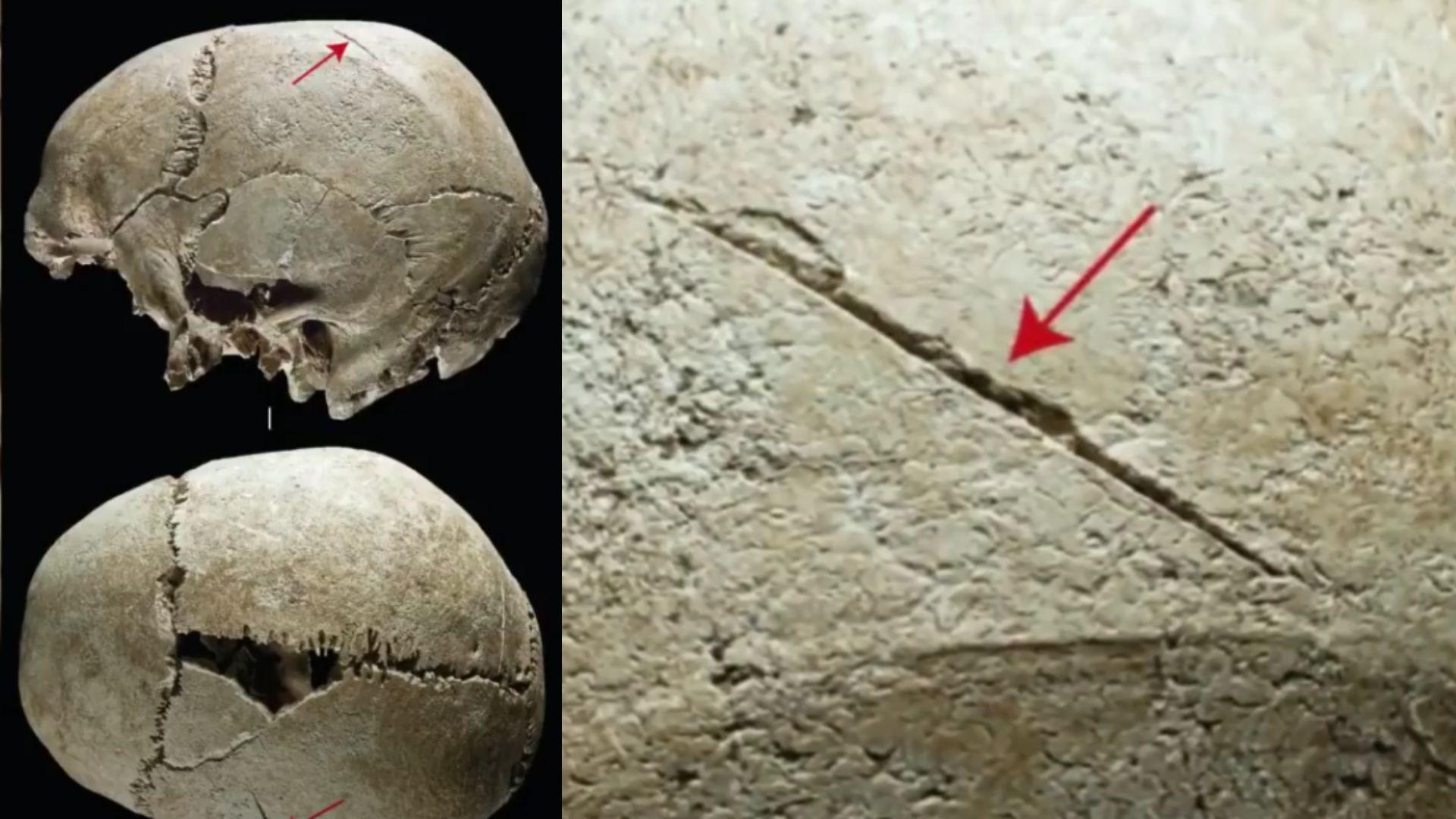
Source: @DidYouKnow/YouTube
According to their extensive research, many of the executions seemed to have happened at exactly the same time, and in what one might call an unprofessional manner.
Many Skeletons Showed Several Blows
The archaeologists reported that many of the skeletons and skulls had several blows that make it seem as though the executioners either weren’t very experienced. Or that they were simply moving through the 54 men as fast as they could without positioning them properly for a single-blow execution.
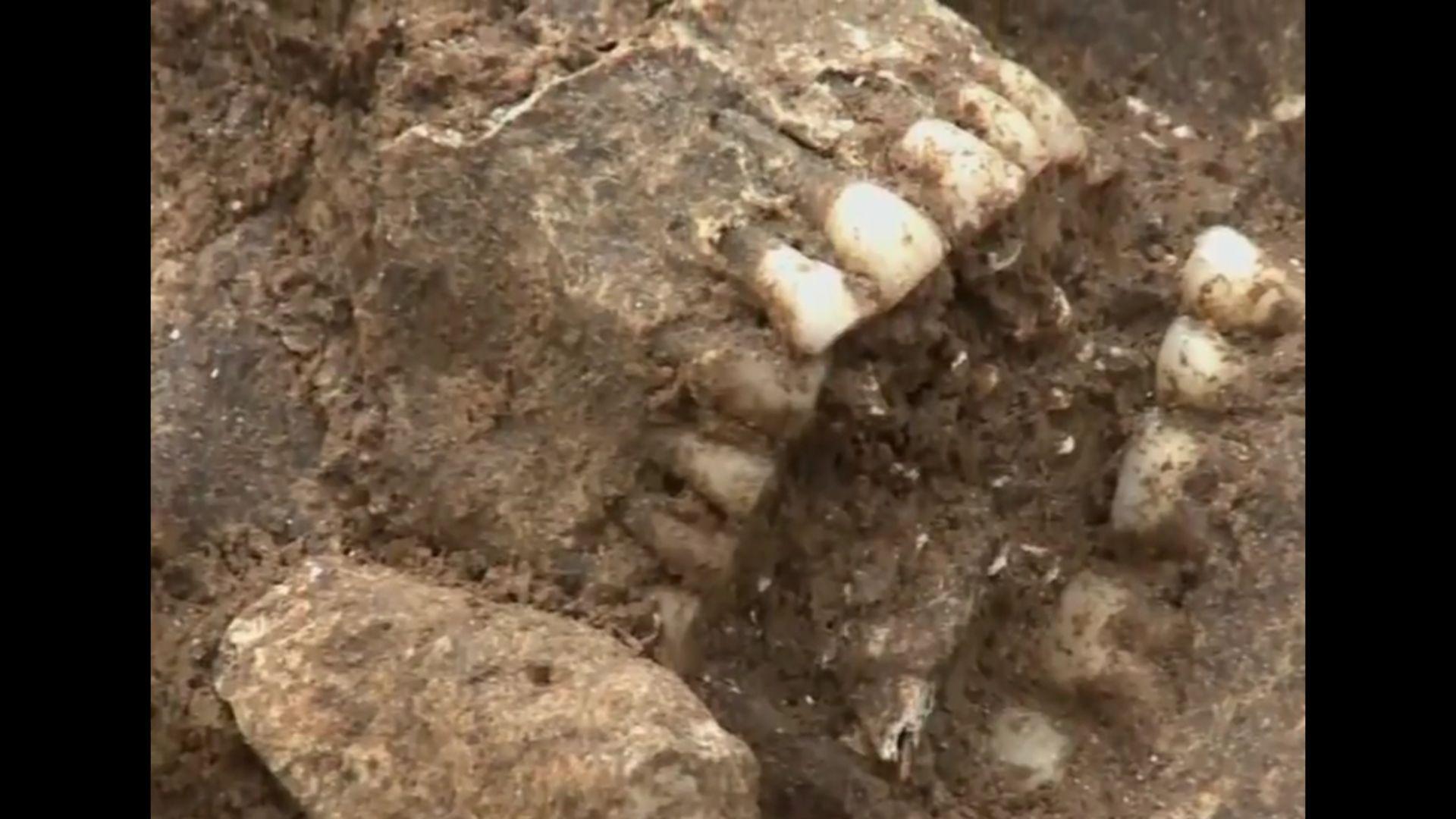
Source: @DidYouKnow/YouTube
There were also some marks on various wrists, leading them to believe that some men attempted to defend themselves against the weapons.
Only 51 Skulls Were Found
All 54 of the skeletons they found in the shallow grave had been beheaded; the skeletons were left in one large pile while the skulls were nearby in another.
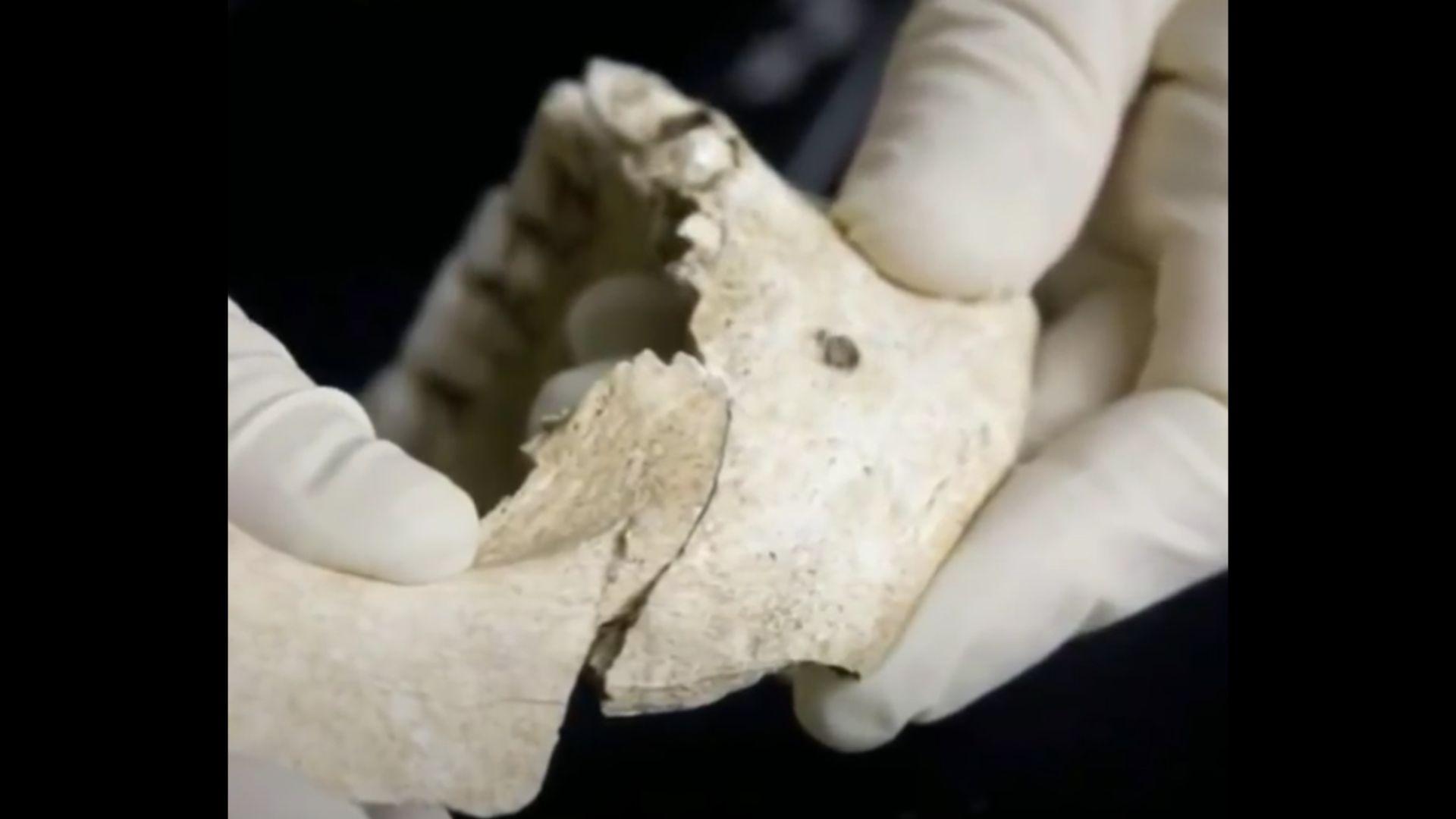
Source: @DidYouKnow/YouTube
However, what was strange to the researchers was that while they found 54 bodies, they only found 51 heads.
The Missing Heads May Have Been Used as a Warning to Others
Thanks to historians’ understanding of the Middle Ages, these experts have hypothesized that the three missing heads may have belonged to the leaders of the dead men.
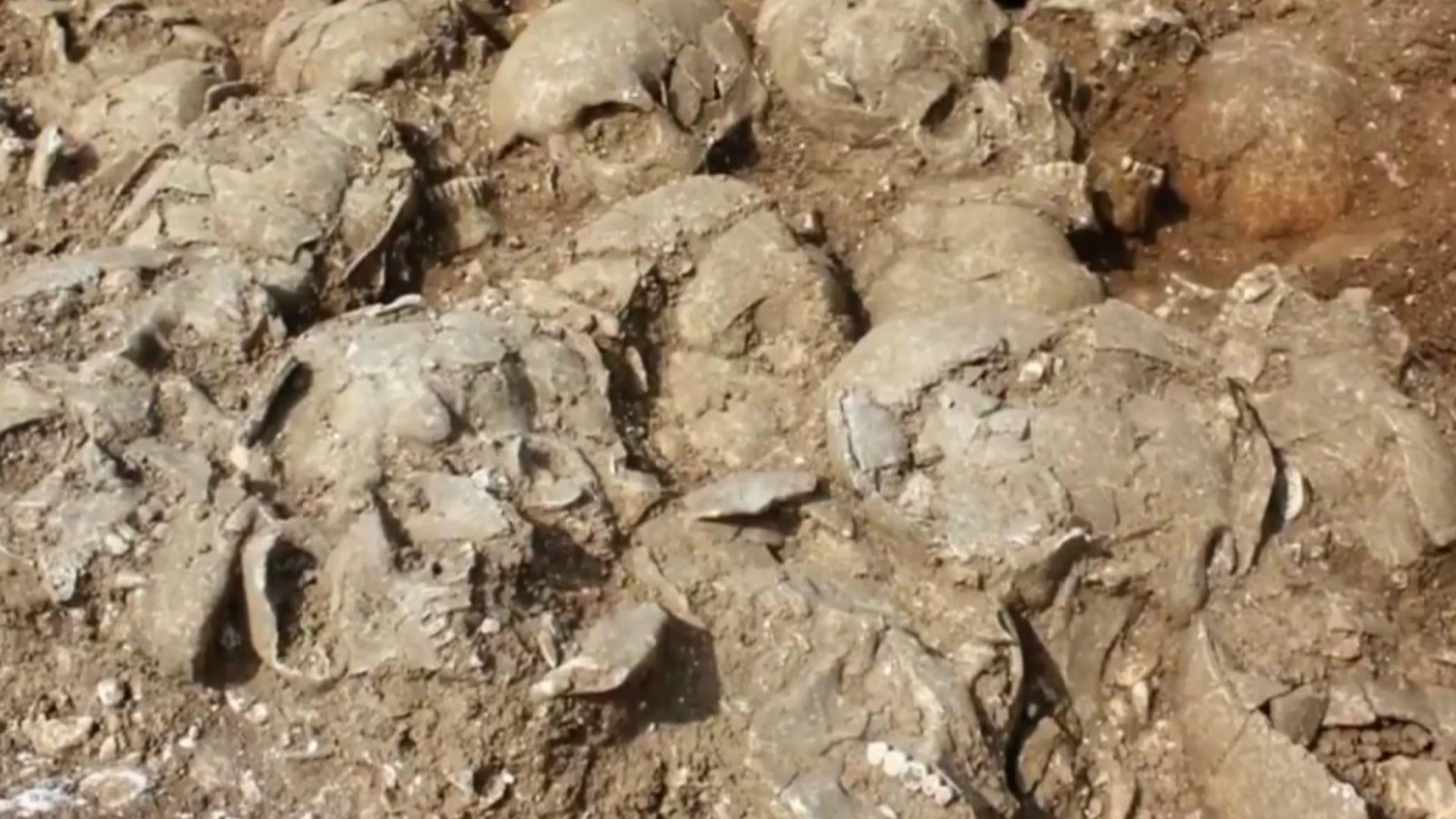
Source: @DidYouKnow/YouTube
Therefore, they were likely displayed on stakes elsewhere in order to send a message that those who did the killing were unquestionably the ones with the power.
Who Were the Killers and the Killed?
Because of where the skeletons were found, when they are from, and how they were killed and dismembered, archaeologists have several theories on who they were and who killed them.
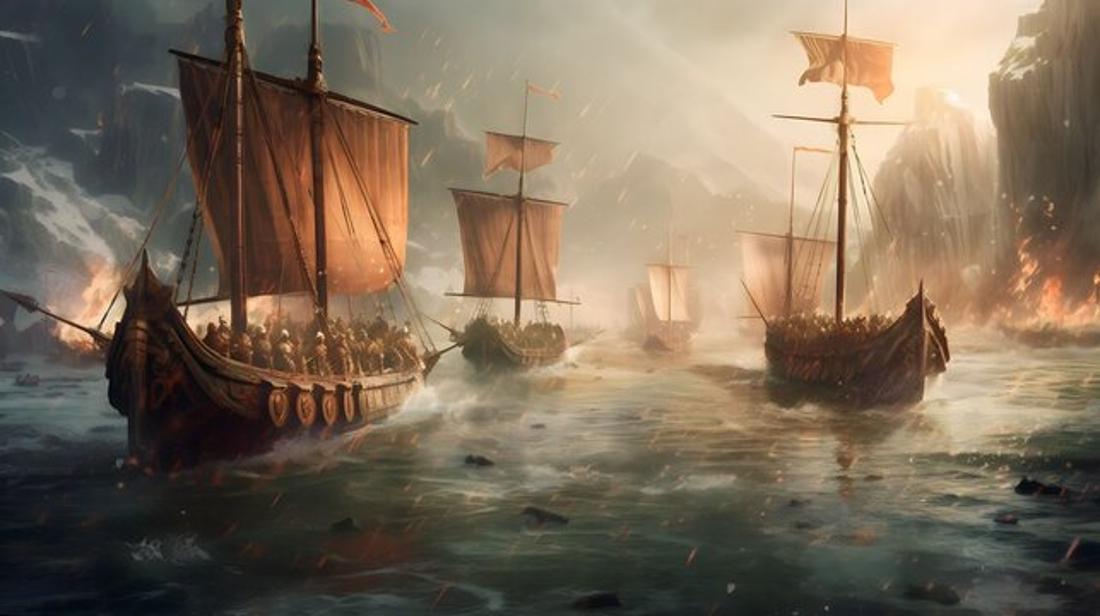
Source: Adobe Stock
The skeletons are widely believed to have belonged to Scandinavian Vikings who had invaded what is now England. Some archaeologists argue that the natives of the island, then known as the Anglo-Saxons, executed the intruders shortly after they debarked from their boats.
Forced to Surrender Immediately
Author of “Viking Weapons and Warfare,” Kim Siddorn, explained “[t]hey had left their ship, walked inland, ran into an unusually well-organized body of Saxons, and were probably forced to surrender.”
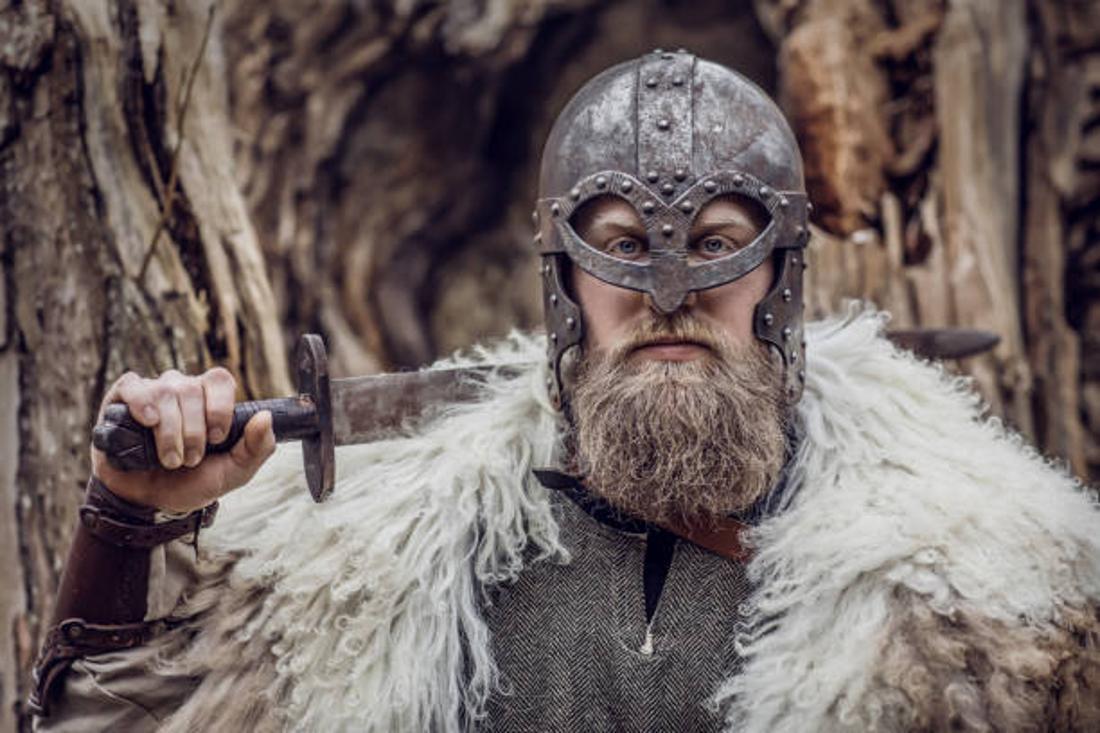
Source: iStock
However, Siddorn’s is just one of many theories as to how these 54 men were beheaded some 1,500 years ago.
They Could Have Been Traitors
While scientific evidence has proved that the skeletons were likely Scandinavian Vikings, they don’t know for sure who killed them.
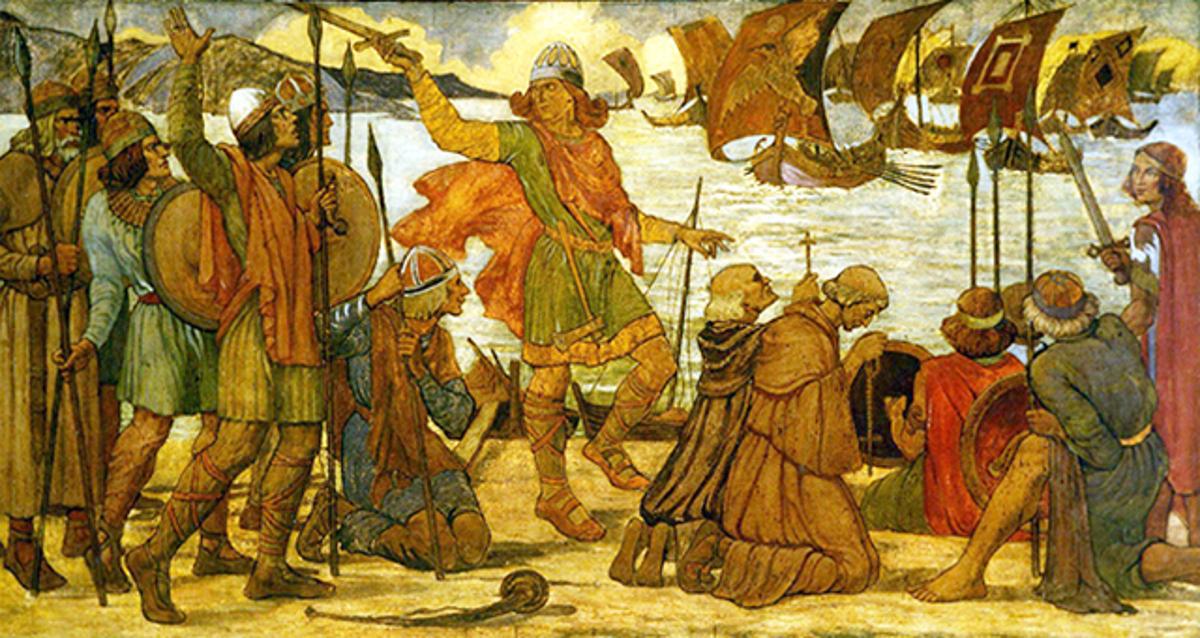
Source: Wikipedia
One argument is that it could have been other members of the Viking clan, killing their own men for betrayal or defecting.
Connecting This Mass Grave With the St. Brice’s Day Massacre
One final theory is that this mass grave is directly connected to the famous St. Brice’s Day massacre.

Source: iStock
Dr. Britt Bailie explained in the National Geographic documentary “Viking Apocalypse” that on November 12th, 1002, Aethelred the Unready ordered a massacre of all Danish Vikings in England. Therefore, the skeletons in this grave could have been victims of this brutal day.
More Research Will Be Conducted on the Headless Skeletons
So far, these are just theories. But with further research and ever-evolving technology, archaeologists are hoping that they will eventually have concrete evidence to prove exactly what happened to these men.
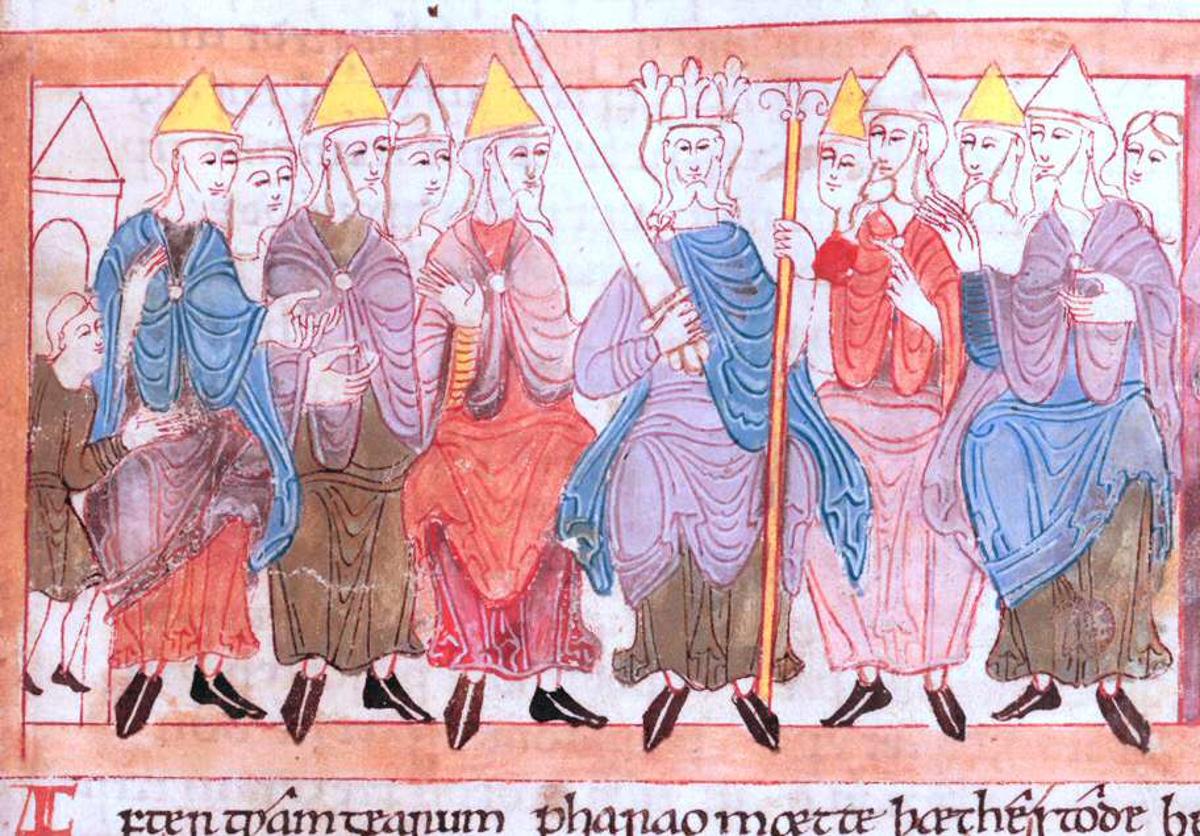
Source: Wikipedia
Additionally, they hope that figuring it out will help them better understand what life was like for the Vikings and the Anlgo-Saxens of the Middle Ages.
An Extremely Rare Finding
It’s important to understand that while there is still much to be learned from these skeletons, the discovery in and of itself is wildly exciting for historians across almost every field of study.
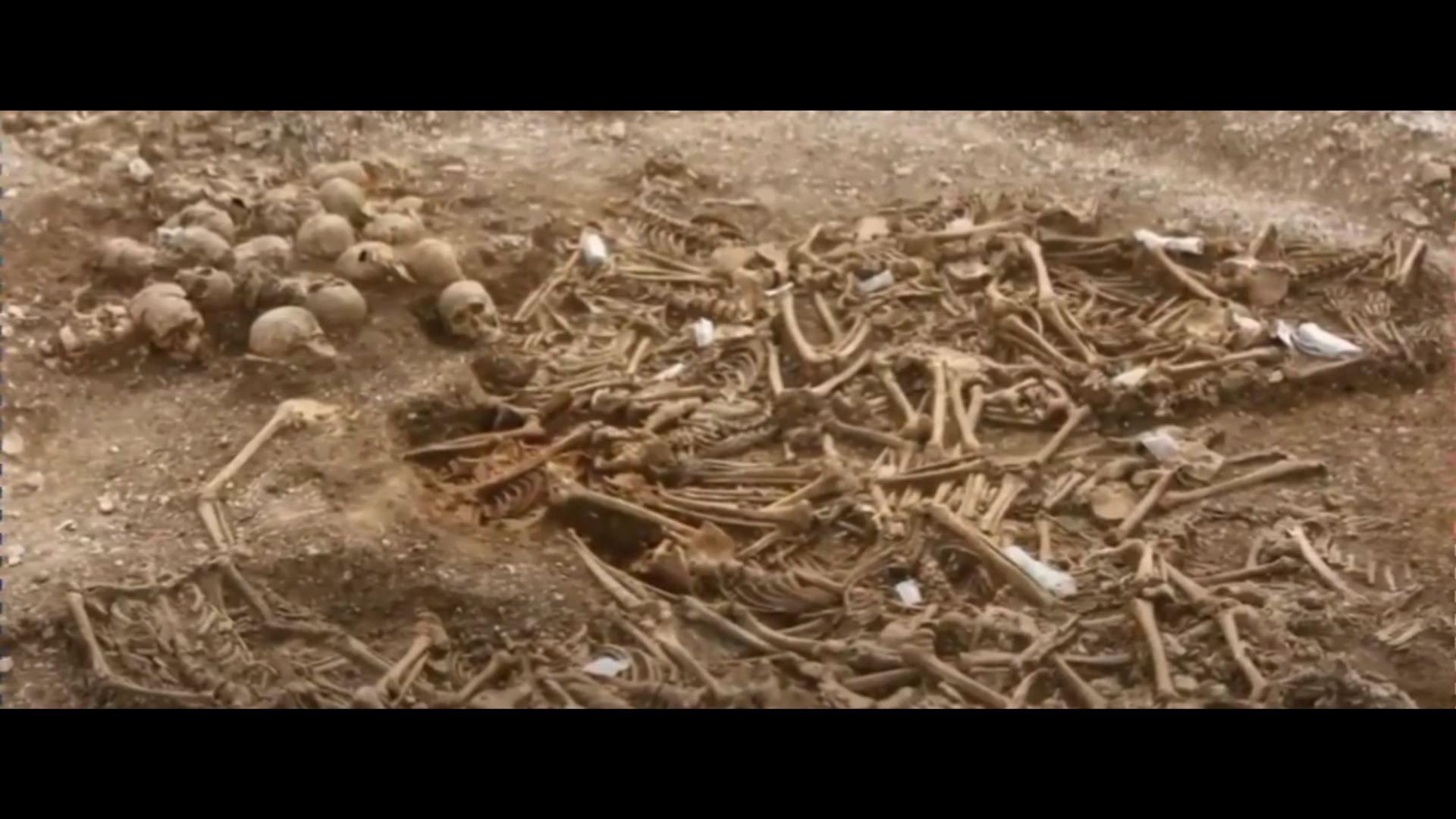
Source: @DidYouKnow/YouTube
As David Score of Oxford Archaeology explained, “[a]ny mass grave is a relatively rare find, but to find one on this scale, from this period of history, is extremely unusual.”
